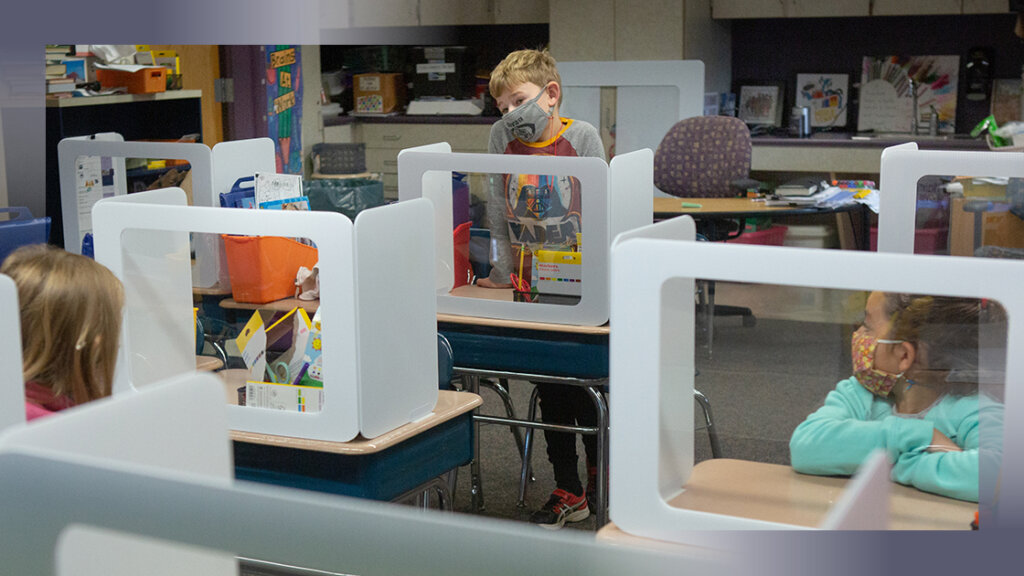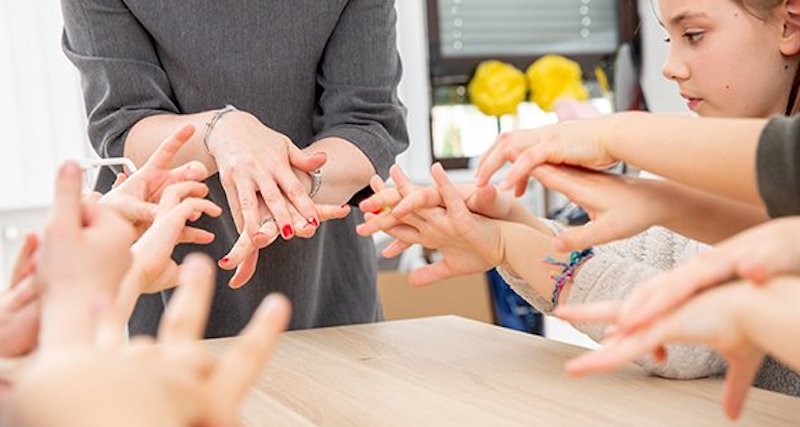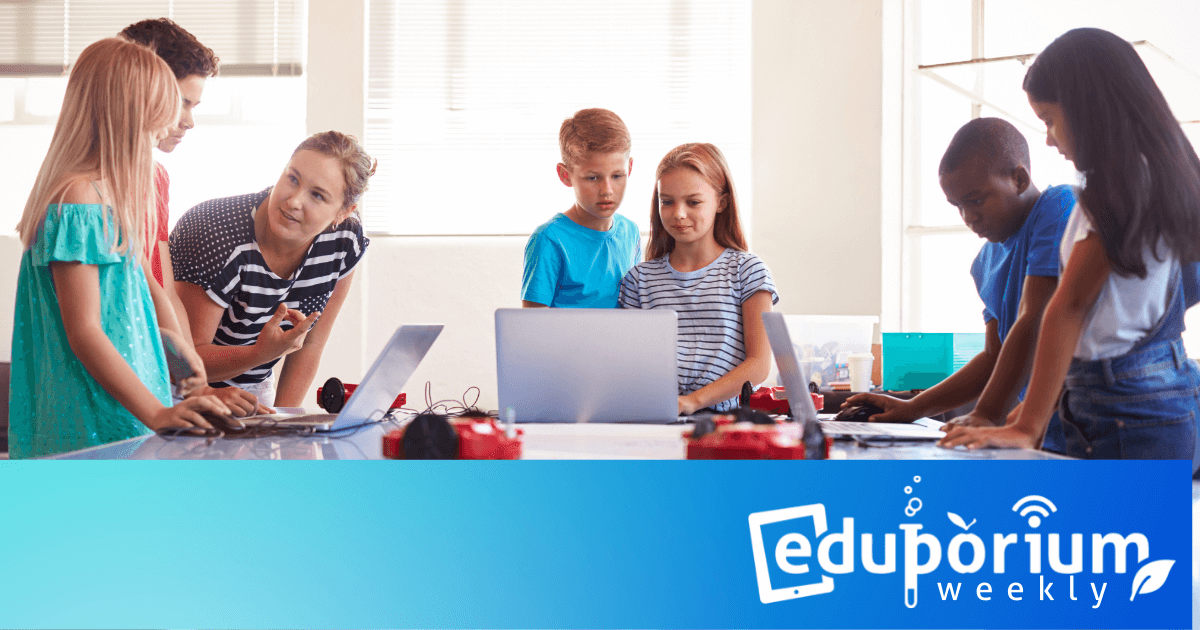As pandemic conditions continue to worsen yet again, the start of the school year is drawing closer. In the eyes of some parents, remote learning is no longer an option. Also, vaccination statuses are fairly high among educators and students (who are old enough), especially when compared to the general vaccination numbers. Parents, students, and state and local leaders want all students in the classroom every day this fall for a number of reasons. One of those is the belief that learning loss has wreaked havoc. Another is that students need to start rebuilding relationships and social skills. Could it be, however, that SEL and learning loss have a much deeper connection than we would have guessed a couple of years ago?
Using an SEL Approach to Help Right Away
Students, in all likelihood, have had a bit of a more traditional summer vacation this year. Many teachers, on the other hand, have had a hard time enjoying their time off with the start of another unique school year looming. Hopefully, students have been able to participate in some kinds of activities, like vacations, camps, or sports. This, of course, is a much better alternative to staring at a screen or remaining in the house any longer. The fact remains, however, that students aren't likely to have been around friends a whole lot. For that reason, there's a good chance that social-emotional growth may have become stagnant. Previously a vehicle to boost academic achievement, regaining that social-emotional balance could be key to a strong return to the classroom for many of them.
Starting with building relationships.
Since a strong social-emotional core typically helps drive academic success and this social-emotional element has been hard to find in the last year, SEL will be a huge focus on combatting learning loss in many schools. This starts with teachers developing relationships with each one of their students and gaining their trust. It's a great way to show kids that they're part of a supportive and responsive classroom atmosphere. Those relationships are also key to assessing and, ultimately, minimizing the effects of learning loss. In order to help students return to pre-pandemic levels of social-emotional health, SEL strategies should be student-centered. It's also best if they're administered in an equitable way to help get all students to the same level.
Getting the most out of SEL.
Many SEL efforts will be created and facilitated from the district level. When it comes to designing these efforts, district leaders can focus on planning and teacher feedback to provide the most advantageous solutions. Besides centering on equity, SEL initiatives should be easy to implement, adapt, and track. Teachers and students also benefit a great deal from consistency and predictability in the routines. Plus, it's good if the SEL initiatives are versatile enough for implementation in all classrooms with students of all ages. This, in turn, means teachers of all subjects as well as specialists should be able to offer their input when it comes to the planning and eventual rollout of a program. Once launched, solid plans should hopefully translate into noticeable results.
The Relationship Between Mental Health, SEL, and Learning Loss
Actually quantifying 'learning loss,' as we know, is extremely tough to do. It's even arguably pointless since it's largely based on assumptions of where in their academic progression students are 'supposed to be.' The fact remains, however, that students did lose out on learning opportunities in the last year (18 months by the time they return in the fall). And, if their social-emotional stability is off in any way, it could have a more impactful effect on their academic progress moving forward. The terms 'mental health' and 'social-emotional health' or 'social-emotional strength' are sometimes used interchangeably. This isn't all that far of a stretch and may certainly come into play this fall. For many students, the best way they'll be able to return to previous levels of learning is to start feeling more relaxed and connected with their classmates and teachers.
Why SEL is important for students.
It's important to remember that each student's situation is different. Some of them may have never settled in to distance learning and, as a result, may still not be in the right head space this fall. This link between mental and social-emotional health shouldn't be ignored. And, this is especially true when we factor in the connection between social-emotional health and overall performance. Students are worrying about all sorts of other things, too, and often unable to progress until addressing their social-emotional health. Even younger students are sharing indicators that they're feeling more stress. In order to rebuild relationships, rebuild routines, and reintroduce students to the academic lives they knew before, SEL must come into play.
Social situations and learning loss differ for all students.
In so many cases, social-emotional stability starts with relationships. If students return to school hesitant about reconnecting with peers or struggling to make friends, that's when the academic implications will also come into play. This is also the point in which learning loss could become a more prominent factor. Learning loss is also expected to hit different groups of students in different ways, but still has social-emotional connections. For example, low-income and ELL students may have had a harder time keeping in touch with friends throughout the pandemic. Though kids can be resilient, it seems that one viable course of action is to focus on helping them get back to a place of confidence and comfort at first. From there, academic success will hopefully more easily fall into place.

Why SEL is So Important These Days
Through no fault of their own, parents and education leaders might naturally want to rush back into as much learning for students as possible. We know, however, that it's nearly impossible to simply flip a switch and get anything truly beneficial out of those experiences. The coronavirus era is nearly unprecedented in the history of education in our country. We say 'nearly unprecedented' because there is one other event that's at least somewhat comparable. In the wake of Hurricane Katrina in 2005, countless students in the areas directly affected were out of school for a long time. Obviously, they forfeited academic experiences, but plenty of educators noticed the social-emotional effects on those students as well. Education professionals have studied that situation and, this time around, hope to apply a lot of what they've learned.
Allowing students to regulate emotions first.
According to the broad acceptance of how learning loss is defined, a large percentage of students will be affected. In order to begin truly addressing this gap, however, teachers might be better off starting with SEL. Before they can refocus back on teaching and learning, teachers and students need to effectively process their range of emotions. Going back to that post-hurricane research, the main finding was that students significantly struggled with quickly trying to cram in a whole bunch as soon as school doors reopened. Once students have had time to focus on relationships and return to a level of social comfort, then they can start truly attacking learning loss.
Working SEL into the Curriculum.
Though some might find it necessary, teachers obviously can't spend eight hours a day focusing on SEL. They can, however, incorporate it into their lesson plans. Even before the pandemic, many educators were exploring new ways to infuse SEL in different subjects. With so much having happened in the last year, a return to learning could provide students with the chance to reflect on events, create projects, or communicate their thoughts with an SEL-centered approach. Studying various effects of the pandemic can help them build empathy, for example. On the other hand, it could create the opportunity for collaborative projects and relationship building, hopefully leading to improved social-emotional health down the road.
How to Use SEL to Reach Students
Aside from focusing on building relationships, there are other reasons to start with SEL. Authentic, relevant, and personal learning experiences can be a huge equalizer in this situation. Culturally relevant projects can also help students feel more comfortable and return to previous ways of learning. When students are able to generate authentic emotions while working on projects, they often connect more deeply with the curriculum. We should also mention that the element of culturally relevant learning has another level in this case. Students from different cultures and backgrounds were all affected differently by the pandemic. Not only can teachers better reach them with culturally informed practices, it might be the only way to start reconnecting with some.
Rethinking assessments at first.
Another instructional strategy teachers can connect to SEL has to do with administering assessments. Since students will be undergoing a pretty big adjustment, some argue that fewer and less formal checks will be best. This is because students are still adjusting in one way or another and don't need the added pressures of testing. Easing them back into things can do a lot to help them regain control of their emotions and academic performance. Plus, formative assessments can better help teachers pinpoint any issues students may have in understanding key topics. They can also be more fun and help create a more positive learning environment for the first few weeks students are back in the classroom.
Don't be afraid to make changes.
One last way to potentially improve the social-emotional states of students is to monitor and potentially adapt instructional techniques. Traditional lectures, for example, might not be effective in the short term. Teachers may find that less formal discussions or the integration of video lessons might be better for reaching students. There's nothing wrong with this and, as long as teachers are prepared for the possibility of pivoting, they should be willing to at least try some new things. When it comes to designing lessons, flexibility is one of the most important elements for today's teachers. Plus, potential learning losses will have affected almost every student differently. If things don't go according to plan at first, teachers may need to rethink instruction and even focus on some students more than others since pandemic learning wasn't exactly equitable.

SEL Comes into Play Before Students Even Return
SEL will be extremely important for all kids this year but, most likely, not a priority in every school. This is largely because different education leaders have different perspectives and that's okay. Returning to school buildings has become a political talking point, however, and students find themselves at the center of the controversy. It's a tough position to be in, though it's likely only a small percentage of them who realize there are political elements going into decisions about returning to school. This fact, however, brings another social-emotional element into play. Are there students who feel like their health is being risked in returning to school. Are there others who feel like their education is being risked in favor of the health of others?
Not all students have bolstered tech and communication skills.
It's a pretty delicate situation and something that's likely only in the minds of older students. If they are thinking about it, however, scrambling to return to business as usual could be detrimental. There's also the issue of the digital divide to consider. While teachers may assume all students were logging in remotely over the last year, that's not the case. Upon returning to school and realizing this, some students may feel bad about themselves, their lack of access, and their lack of newly developed tech skills. And, don't be fooled—this can affect kids in a big way. Without that emotional balance, they stand a lesser chance of thriving academically.
Focusing on SEL with a purpose.
Giving students the chance to communicate and express their feelings at the start is ideal. From there, teachers should try to be consistent in teaching SEL skills and creating opportunities for reflection. Helping students feel physically and psychologically safe, however, is also important. In order to not become overwhelmed, remember that you don't need to reinvent the wheel. Basic and subtle SEL references can be just as effective. Also, despite the option to be subtle with SEL instruction, it's typically most effective when it's done with purpose. When discussing social-emotional competencies, teachers can show what they mean and, through repetition, students can begin to master them.
For the latest EdTech, STEM, and 21st century education news, follow us on Twitter and Instagram. Like us on Facebook, too, or sign up for our newsletter for our latest product announcements and offerings. If you have an idea for an Eduporium Weekly theme, send us a message on social media or comment below.



